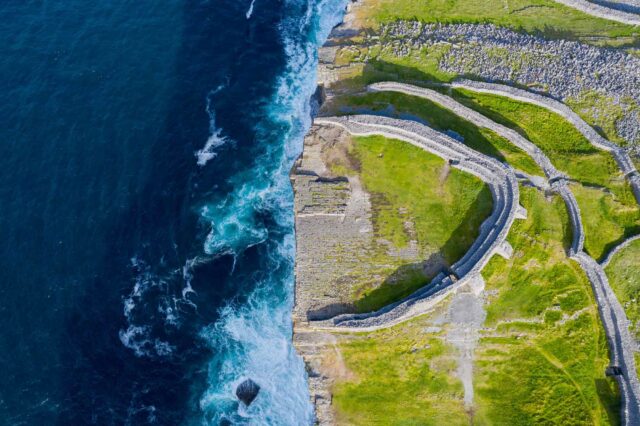Tintern Abbey Highlights (7)

The Medieval Abbey
The abbey itself presents lots of striking original features. The decorated corbel tables located high up around the outside walls of the chancel are a prime example. Among them are 22 carved heads, in the form of humans monsters and fantastical hybrids.
On the east side of the building, small carved ecclesiastical figures can be seen. The north wall of the chancel contains three low arches, possibly intended to be burial places for abbots or other important people.
The cloister was used for spiritual readings and meditation. Each evening the monks and abbot assembled there to read sacred readings and then eat a small collation together. At the north side of the cloister we find the remains of the abbot’s seat and the collation bench.
The arched gateway on the west range is the only surviving trace of the medieval domestic buildings. Dating from the thirteenth century, it was the main entrance to the cloister and led into the chambers to the south.
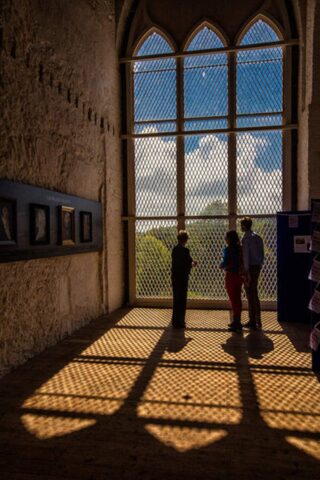
The Colclough Influence
After the monastery at Tintern was suppressed by King Henry VIII, the church, cloister, associated buildings and lands passed into the hands of Sir Anthony Colclough, who turned it into a private dwelling. Many of these elements still remain. For example, the Lady Chapel was converted for use as a kitchen; the chimney is still in place and can be seen today. The family library, an impressive large and spacious room with a nineteenth-century Gothic window can still be viewed today. This window presents stunning views including the shore of Bannow Bay, a sixteenth-century bridge and the remains of a limekiln.
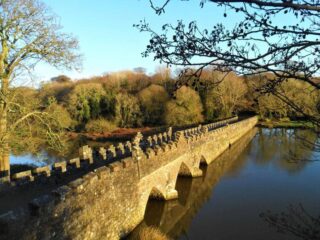
The Battlemented Bridge and Church
This rare surviving example of a sixteenth-century bridge is just a short distance from Tintern Abbey. It has three arches and is a defended by a crenellated parapet. Made from locally sourced stone, the entire structure measures approximately 16 metres in length. Anthony Colclough was interred in the small church near the bridge, just a short stroll from the abbey.
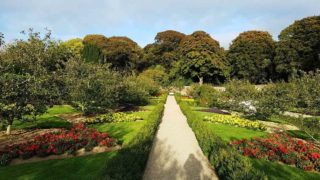
Colclough Walled Garden
This Georgian walled garden was built by the Colclough (pronounced coke-lee) family over 200 years ago. Volunteers began the work of restoring it in July 2010. The original layout has been reinstated – it is now just as it was in the 1830s. Among the most interesting features of this 2.5-acre stone/brick-lined walled garden are two intramural structures on the dividing brick wall that splits the garden into two sections, east (ornamental) and west (kitchen), and a river, crossed by five bridges, which flows through the garden. It is situated in a verdant valley filled with songbirds. Visitors pass through the former village of Tintern along a woodland path where bluebells and wild garlic abound in springtime and where, in summer, beech trees cast a dappled shade. The garden itself is domed with open sky, in which you might be lucky enough to spot a Colclough eagle.
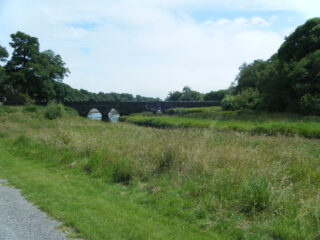
Tintern Trails
Four looped walks start from the trailhead at Tintern Abbey, offering a variety of scenery and historical features. These walks encompass many distinctive attractions, including ancient monuments and a variety of birdlife. The area around Bannow Bay in particular has strong links with the past. The Normans first landed in Ireland at Bannow in 1169 and dominated the region for many years. Their influence can still be seen in the many castles and other remains that dot the landscape. There are panoramic views of the coast to be enjoyed. The Saltee and Keeragh Islands follow the road beside the bay, which is an important birdwatching area. The mild climate of this part of south-east Ireland ensures year-round food sources for birdlife and good overwintering grounds for a wide variety of migratory species. An expanse of mudflats exposed at low tide offers an ideal habitat for large numbers of waders, shelduck, Brent geese and other wildfowl.
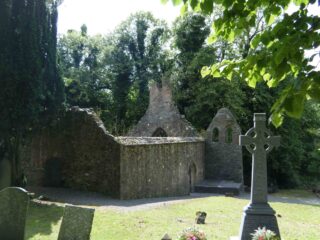
The Mill Ruins
A short walk from the abbey, nestled in woodland close to the bridge, stands the shell of an eighteenth-century flour mill, which John Colclough established in the 1790s. The building is now picturesquely enveloped in ivy and has been photographed and painted by many fine artists over the years.
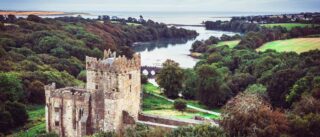
Astounding Scenery
Tintern Abbey is located at the head of a small inlet on the western shore of Bannow Bay. The abbey and its surroundings invite visitors to relax and enjoy the beautiful location. Pretty inland countryside with quiet woodland walks and a particularly beautiful stretch of coastline make this part of Wexford one of the most scenic areas in Ireland.
